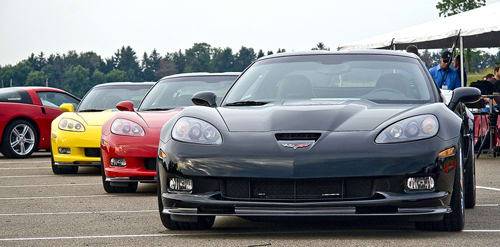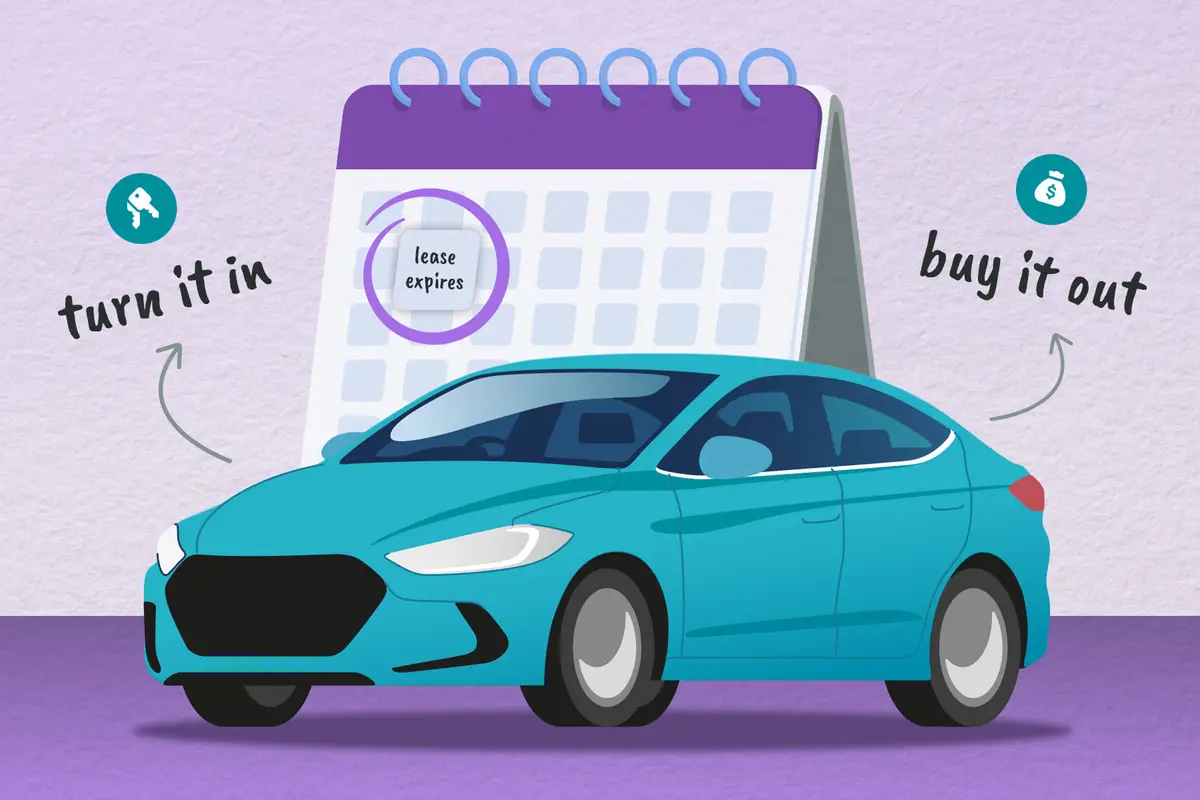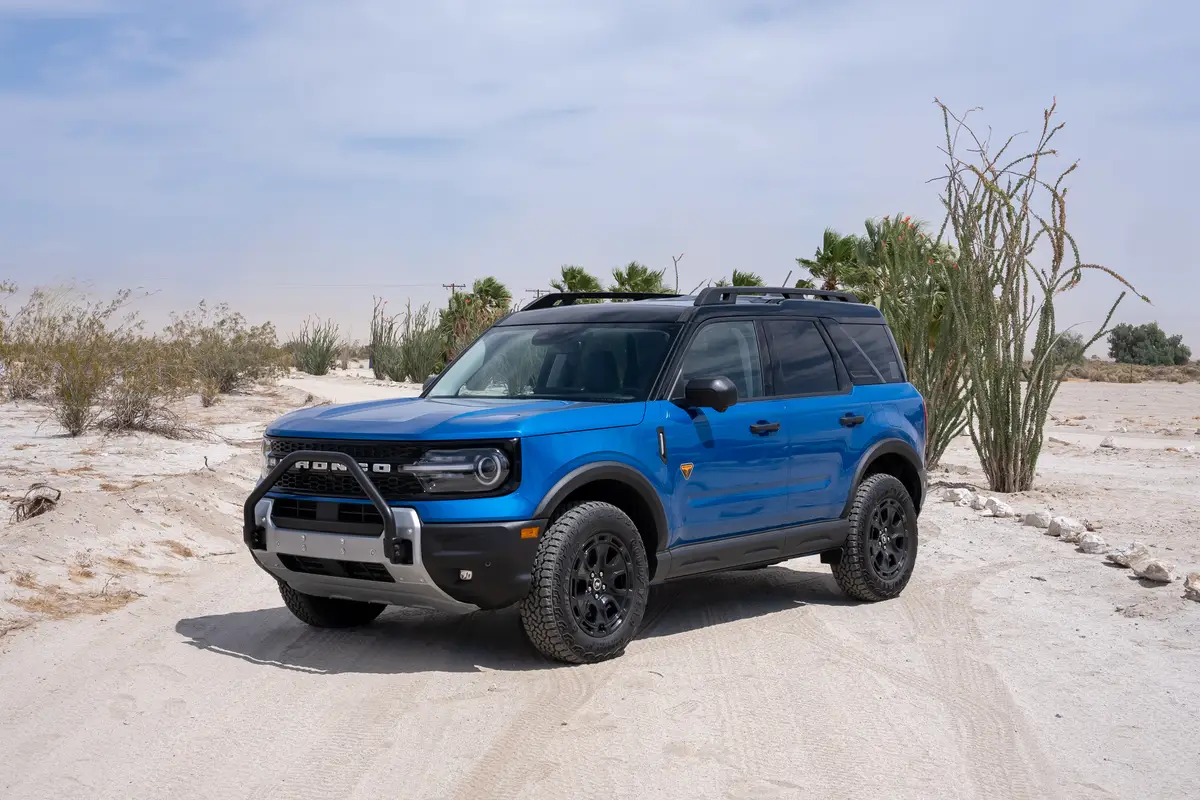Enthusiast File: 2009 Chevy Corvette ZR1


One could argue over what makes a “supercar.” Performance? Price? Styling? Exclusivity? If it’s performance, look no further than the $102,450 2009 Chevy Corvette ZR1. On the track, it proved to be one super car.
I got nowhere near the 205 mph top speed, but I felt the 3.5-second 0-60 mph time, the 7-second 0-100 time and the 0-100-0 mph time of less than 11 seconds. The supercharged 6.2-liter V-8 cranks out 638 hp at 6,500 rpm and 604 pounds-feet of torque at 3,800 rpm, for the kind of thrust you only feel in an elite group of cars. What sets the ZR1 apart, though, is how well it goes beyond straight-line acceleration and braking. In June of this year, the ZR1 set a production-car record time of 7:26:4 at Germany’s famed Nurburgring with Chevy chassis development engineer Jim Mero at the wheel.
Before I allowed Mero to turn me into a bobblehead at GM’s Milford, Mich., proving grounds, I took a dozen or so laps myself and was stunned by the ZR1’s grip, composure and raw but eminently controllable power. It gets you up to speed in a heartbeat, with a revised version of the Tremec six-speed manual employed in the Vette’s regular and Z06 versions. The ZR1 starts its life as a Z06’s aluminum shell and adds a lightweight carbon-fiber roof, hood and front fenders enlarged to accommodate tires that are nearly a foot wide. The engine, though, is not the Z06’s 7.0-liter LS7 V-8 but an adapted 6.2-liter LS3 V-8 from the regular Corvette, dubbed the LS9. (GM might have supercharged the 7.0-liter, but then it would have to be called the LS-you-gotta-be-kidding-me. Actually, its extra bore makes for thinner cylinder walls, which might not survive the blower.) A new Eaton four-lobe roots-type supercharger is nestled in the valley between the heads and topped by an intercooler.
The water-cooled design makes for low-profile twin-brick heat exchangers that suck as much as 140 degrees out of the hot compressed air while adding only a few inches to the engine’s height. The custom hood compensates, and even shows it off with a clear polycarbonate window — yes, a window in the hood, made of the same stuff that typically covers headlight clusters. You can see the carbon fiber on the hood’s underside, though the outside is body-colored. The carbon-fiber weave is visible on the roof, rocker panels and chin spoiler. The chin spoiler “splitter” and sills are there to reduce lift, aided by a tasteful, purpose-built spoiler on the rear end. See? A car can go 205 mph without a big dumb wing on the back.
Unfortunately it couldn’t go 205 on my track day because a main straightaway had been chicaned, and we were required to idle through the pits after each lap, perhaps because one of the journalists had earlier gone gardening — plowing up the outfield and snapping off a chin spoiler — before the rest of us could get our yah-yahs out. All the same, the car feels settled above 100 mph, where lift-throttle oversteer starts to show at the top end of 3rd gear — above which I seldom had to go on this track. It’s nothing like the ambush that awaits if you dare let off when the Dodge Viper’s tail starts to loosen up. Even though the ZR1’s limits are predictable, it demands quick and decisive correction when the custom Michelin Pilot Sport PS2 ZP tires finally and reluctantly yield to the laws of physics.
I customarily turn off a performance car’s electronic stability system on the track to get a feel for its true dynamics, but the most I thought it wise to do was switch the Active Handling to Competition Mode, which lets you spin the tires and slide about, but draws the line at spinouts. I was impressed by the car’s balance and tractability, but I was even more impressed when I realized how subtle the Active Handling’s default mode had been: On the course’s more demanding segments, where I’d thought I’d been in control, I recognized it was the stability system that had been in control, doing its job so unobtrusively that I didn’t realize it. Stability sensors and programming have come a long way, but I’m going to give credit for the Active Handling’s subtlety to my hands-down favorite aspect of the ZR1: its brakes.
The Brembo system uses cross-drilled carbon-ceramic discs that combine low mass with excellent thermal characteristics. Chevy boasts that the ZR1’s 15-inch rear brake rotors are the same diameter as the front ones on the Ferrari Enzo, and the fronts are even larger, at 15.5 inches. While the ZR1 itself weighs more than the Z06 — 3,324 pounds versus 3,164 pounds — the brakes help lower the unsprung mass, which pays off in terms of ride and handling. Where some exotic rotor and pad materials make for excellent track use while extending stopping distances out on the street, when they’re cold, these seem to make no sacrifices, and that’s the overarching theme of this super-expensive model that sets it apart from the already expensive (though currently bargain-priced) Z06. Thanks to the standard Magnetic Selective Ride Control, an adaptive suspension that’s offered on the regular Vette but not the Z06, the ZR1 provides better ride quality on the street and smarter handling on the track. There are switchable touring and sport modes, but the real value is in the way the computer monitors wheel and body motions and varies shock absorber firmness to suit in real time.
The drivetrain has the same split personality. There’s so much torque at all engine speeds that you can keep the rpm low and trundle discreetly around town. Even with the journeyman Tremec six-speed gearbox’s revised ratios, gear choice is a formality. About 500 pounds-feet come on at about 2,000 rpm, and the twin-disc clutch is easy to engage. Unless you plant your right foot, there’s nothing about this car that intimidates its driver. Borrowed from the Z06 are computer-controlled diverter valves in the mufflers, whose vacuum actuators are visible atop the tailpipes, which keep the exhaust quiet until the right combination of rpm and load (roughly 3,000 rpm) prompts them to bypass some of the mufflers’ chambers for reduced back-pressure and a terrific V-8 growl.
On the street, the ginormous tires seem to take a toll on steering feel, but I was satisfied with it on the track. Though the ride quality on the street isn’t luxury soft, it’s workable for a car of this one’s capabilities. This is now the price of entry for high-cost supercars. Technology is such that you don’t have to sacrifice much comfort for performance if you throw enough money at it. Even the Nissan GT-R is a genteel cruiser — more comfortable, in my opinion, than the ZR1. Whether you doubt the track cred or not, where the ZR1 beats the pants off the GT-R is in fun. (Here comes the hate mail.) As I pointed out in my review, the more affordable GT-R is something of a performance miracle, but the combination of V-6 power, all-wheel drive and — especially — the lack of a stick shift make it less engaging to drive, especially on the street.
The urgent thrust at low speeds, the ability to hang the tail out and the ability to work the short-throw shifter make driving the ZR1 feel like, well, driving. (And when it doesn’t much matter what gear you put the trans in, isn’t that halfway toward being an automatic?) The exceptional brakes also are appreciated on the street, possibly more than on the track. Lots of brakes can stop their car, but they don’t all have the pedal feel and controllability of the ZR1’s. Even in normal driving, the precision is exceptional. I actually underestimated their capability on the track until I took a hot lap with Mero, who let me know what it feels like to have a 200-pound head.
He barreled into the first turn at Milford about twice as fast as I had, and proceeded to exercise the brakes, powertrain and roadholding to levels I hadn’t even imagined. Mero won’t be visiting the homes of all ZR1 buyers, but they will receive a certificate to attend Bondurant driving school. Yes, I would say the ZR1 is a supercar. That’s not to say it’s flawless. Its shortcomings are more practical ones, related to the market. Though it’s not a major deterrent to its likely buyers, the ZR1 has fuel economy of 14/20 mpg. That’s not uncommon for a supercar, but it is for a Vette, which gets 16/26 in the regular model and 15/24 mpg in the Z06.
Then there’s the interior, which is spiffed up and customized in the ZR1, but even with that and the $10,000 Premium Equipment Group option package, it’s still pretty much a Vette, and the Vette hasn’t caught up with the best of GM’s interiors. This is what sums up the ZR1 as a supercar, as a product. Its strength is also its weakness: It’s a Corvette. With that comes decades of development and refinement and the kind of performance I enjoyed on the track, but apart from the window in the hood, the carbon-fiber body add-ons and other things that an enthusiast might notice, to everyone else, it’s just a Corvette. Supercars tend to be their own entities, with looks to match. Compare to any Ferrari, Lamborghini, the Ford GT and the Porsche Carrera GT. The Nissan GT-R is less expensive, but it’s a model unto itself. The Audi R8 doesn’t come close to the ZR1’s acceleration, but … look at it! Even the Porsche 911 GT2 — which like the ZR1 is based on an existing model — is more distinctive, albeit with a giant rear spoiler.
The apparent exclusivity just isn’t there with the ZR1, which affects not just its aesthetic appeal but its likely resale value. You just can’t compare a limited-production version of a model to a limited-production model. Buyers of the previous limited-run ZR1, which was based on the C4 generation, now find that even low-mileage cherries may have held their value but have not appreciated markedly. The Ford GT, on the other hand, already commands higher-than-original prices. If you want practically unmatched capability and fun on the street and the track, plus day-to-day livability in a car that is very much American, pick up one of the 2,000 ZR1s that will be built this year. If you want an investment, whether or not this is a good choice will depend on how much the market values performance — and how future models stack up against this quintessential Corvette.

Former Executive Editor Joe Wiesenfelder, a Cars.com launch veteran, led the car evaluation effort. He owns a 1984 Mercedes 300D and a 2002 Mazda Miata SE.
Featured stories




